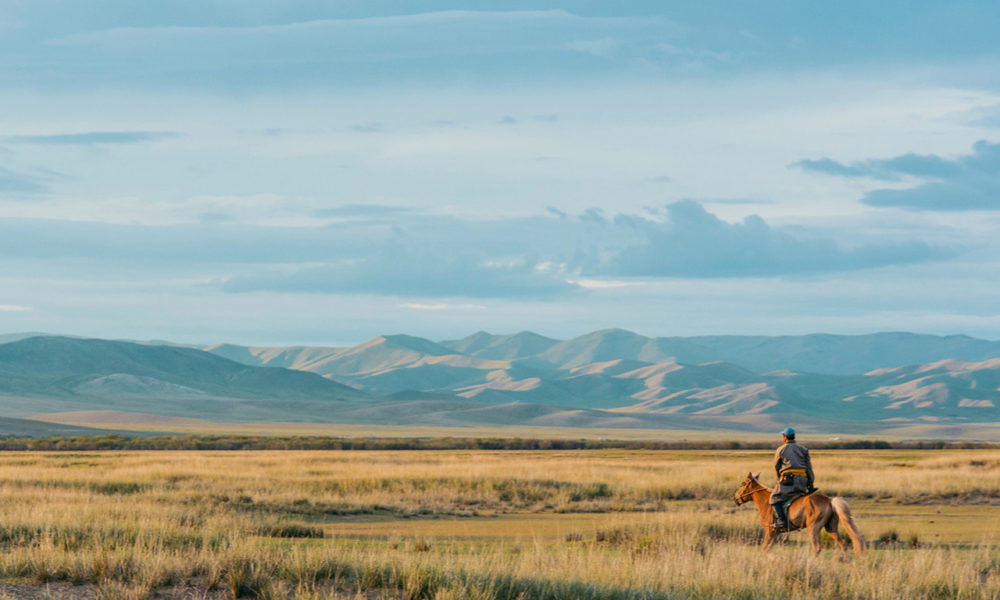The Nomadic Lifestyle
A Lesson in Harmony with the Earth
Today the world is changing faster than we can comprehend, and it is all because of the industrial and technological advances of mankind. But on the Central Asian Plateau, a timeless way of life persists. Specifically in Mongolia, where Bronze Age nomadic tribes once roamed the steppes and the high mountains, their modern-day descendants today continue to live in coexistence with the environment.
Nomadism is a philosophy of living in harmony with the Earth. A whole culture and a tradition has developed over thousands of years, passed down from generation to generation, all revolving around being sustainable by design.
A nomadic family will have the five jewels (or the five snouts), comprised of camels, horses, cows, sheep, and goats. All are used for their milk, meat, skin and wool. It is a common site to see that a nomadic family will have up to 500 animals across all 5 jewels.

Nomadic herders stay in an area no more than 3 – 4 months, moving on to preserve that exact area for the same time the following year. Because of the constant moving, nomadic people never build a permanent structure, but instead live in a tentlike structure called a ger (pronounced gaire) that can be constructed and dismantled in less than half a day.
They will commonly winter in the same spot each year. However in the warmer months, nomads lighten their load and move more easily, only carrying what they need for those months and leave behind other possessions at their winter pasture. Not only does this help the nomads move more easily, it also helps the nomads to be less impactful on their natural surroundings.
The moment a nomad arrives at a location to erect their ger, they ask for a permission to erect their home from the land, by starting a fire and making an offer of milk to the local spirits. These locations are prechosen by nomads as they were either once used by their forefathers or have been carefully chosen for an abundance of grass and favorable conditions for the herd.

Ideal pasture lands are close to a water source but not so close that the animals pollute the water. After all, hundreds of animals can pollute the water easily. Therefore, nomads must find the perfect balance of keeping the animals close to water and yet far enough to keep the water source free of pollution. Dating back to Mongolia’s earliest history, Nomads have a tradition of not polluting water at all costs. We make sure to pass this to our children, ensuring that they follow the same principle.
Upon departing from one location to the next location, nomadic families are also sure to never leave any trash. We believe we must leave the land as it was before we came. And because overgrazing can ruin an area for the coming year, nomads must calculate how long they can pasture a herd in an area yet not overgraze. Should there be a need to move, they will move without missing a beat.
One might think that a nomadic family may produce quite a lot of waste, especially with hundreds of animals. Yet nomadic people are mindful that there be no waste from their animals. The sheep wool is made into thick felts and used to cover the gers, providing an ideal insulation of keeping the interior warm in colder months and cool in hot summer months. Cashmere is made from goat hair that’s been combed. The camel wool and horse hairs are used to make thick strong ropes to fasten and keep the gers snugly in place. The animal hides are cut into long strips of ropes and used for animal husbandry. Nomads use dried animal droppings as fuel as it has almost no smell yet burns for quite a while.
All of this ensures the philosophy of recycling is followed as it is not just good for the environment but also helps support the herding family by not needing to pay for such resources.
Finally, to be self-sustainable, nomads make great dairy products from animal milk. There are more than 800 dairy products all over Mongolia. The most common dairy product is the Aaruul (hardened dry milk curd), that is hardened and taken all over when traveling.

For longer journeys, nomads travel with homemade jerky, locally known as Borts for their protein supplement. It’s an air-dried meat that’s been sliced and can be boiled into a sumptuous meal.
This is the philosophy of using and utilizing everything from the land and onne’s animals and being totally self-sufficient and dependent.
The more one travels throughout Mongolia, the philosophy of preserving the land becomes more evident. The land, mountains, rivers, valleys, hills, even a single tree has been named… The lands are mentioned in every local folklore and in songs, as many of Mongolia’s myths and historical accounts have a wisdom about living harmoniously one with the land.

However being a nomad is more than a lifestyle. Nomads following this philosophy of being respectful to the land find that in return the land bestows everything they need for their endeavors.

